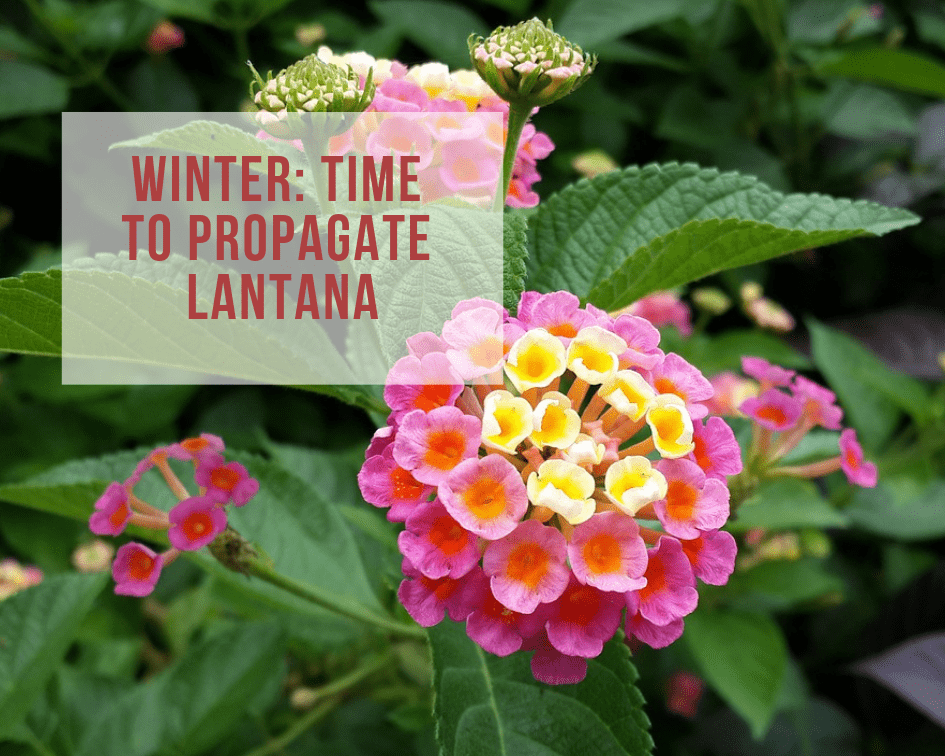This post may contain affiliate links. As an Amazon Associate we earn from qualifying purchases.
All the information you need to be successful when overwintering hibiscus plants — hardy AND tropical!
This is the time of year that the “How-do-I-protect-my-[whatever]-plant-in-the- winter?” emails come pouring in. Since not everything we grow may be winter hardy in any particular neck of the woods, this is an important question.
When it comes to hibiscus, we’ll need to address both the tropical and the hardier species. So, let’s get started.
How can I tell if my hibiscus is hardy or tropical?
How you’ll go about overwintering hibiscus plants depends on the type of hibiscus you’re protecting. There are tropical hibiscus plants and hardy hibiscus plants.
There are a few ways to tell the difference between a tropical (Hibiscus rosa-sinensis), also known as Chinese hibiscus, and a hardy hibiscus, commonly known as Rose of Sharon (Hibiscus syriacus) or (Hibiscus moscheutos), commonly known as Rose Mallow.
Online, you’ll find a variety of hardiness zones for each of the three, which confuses the new hibiscus grower. Here is what we know:
- Hibiscus rosa sinensis: Hardy to USDA Hardiness Zones 9 through 11
- Hibiscus moscheutos: Hardy in USDA Zones 5 to 9
- Hibiscus syriacus: Hardy in zones 5 to 8
Find your zone by entering your ZIP Code in our Zone Finder (link opens in a new tab).
Since the flowers are the first thing we seem to notice, we’ll start our comparison with them.
Tropical hibiscus typically bloom in shades of yellow, red, orange and pink, “… but they also come in lavenders, bluish tones, whites, browns, golds and reds that are so dark that some people call them black,” according to the experts at the American Hibiscus Society.
They boast either single or double flowers that are 3 to 6 inches in diameter. Hybrids can have flowers up to 10 inches in diameter.
Leaves are deep green and can have either serrated or smooth edges. If the leaves are glossy and deep green, it’s a tropical hibiscus. But, not all tropicals have these types of leaves.
Hardy hibiscus, on the other hand, bear single blooms and often these flowers are larger than the tropical ones. They do not, however, produce double blooms.
Confused yet? Maybe this will help.
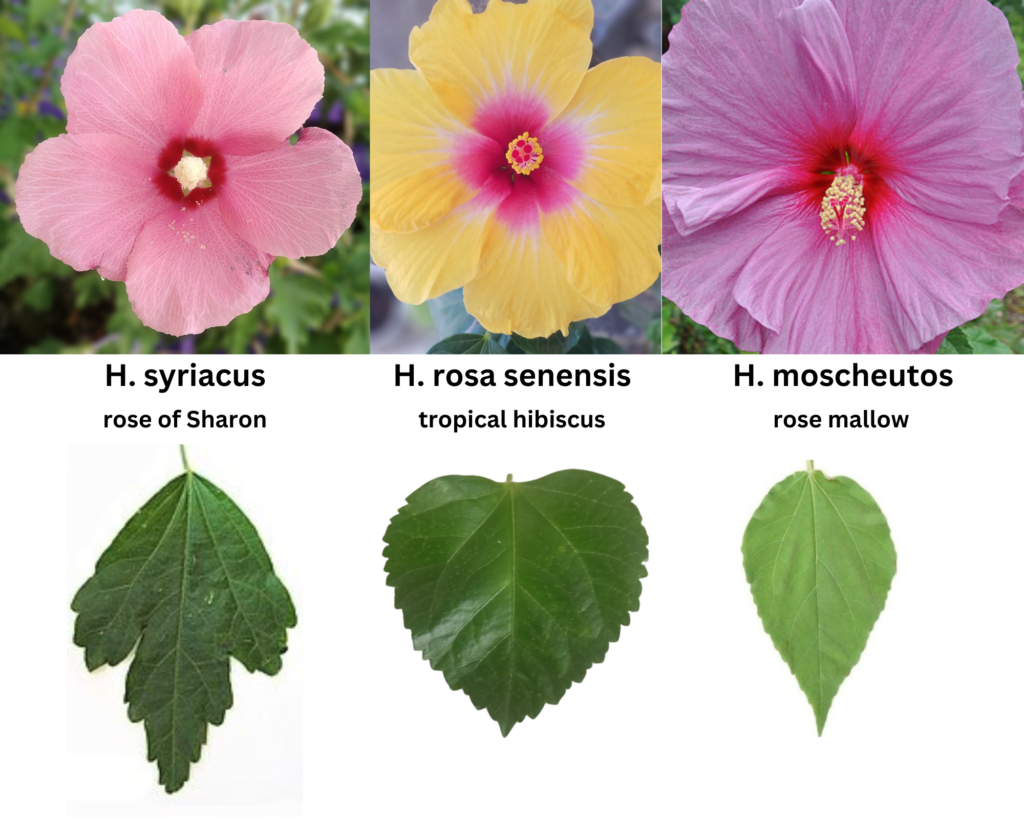
Overwintering the potted tropical hibiscus
She’s not the diva that people think she is.
There, I said it.
The tropical hibiscus is the star of my garden every spring and summer and often, beyond. In fact, right now, I am overwintering hibiscus plants in pots in my living room. One is in full bloom and the other is covered in buds.
But, we’re jumping ahead.
If you’ll be bringing your hibiscus indoors over the winter you’ll need to make sure there aren’t any bugs hitching a ride.
I use a systemic houseplant insecticide a few days before I move them. Between applying the insecticide and bringing them in, I spray the foliage with water from the hose. This ensures that any new bugs are washed away.
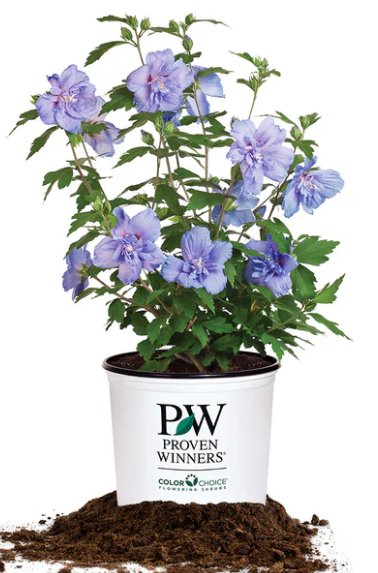
Too big for the indoors?
Prune it. While some growers say it’s safe to take off half the plant’s current growth, I’m a bit more conservative and recommend no more than 30%. You’ll be surprised how well tropical hibiscus respond to pruning.
The plant requires no special treatment other than bringing them indoors when the temperatures dip below 50, keeping them warm and putting them in front of a very sunny window.
I live where there is lots of sunshine, year ‘round. You may need to make concessions for a lack of sunlight. Aside from warmth, it’s the one thing this plant needs more than anything else.
If you need more light for your tropical hibiscus, I urge you to use grow lights (see our suggestion, below).
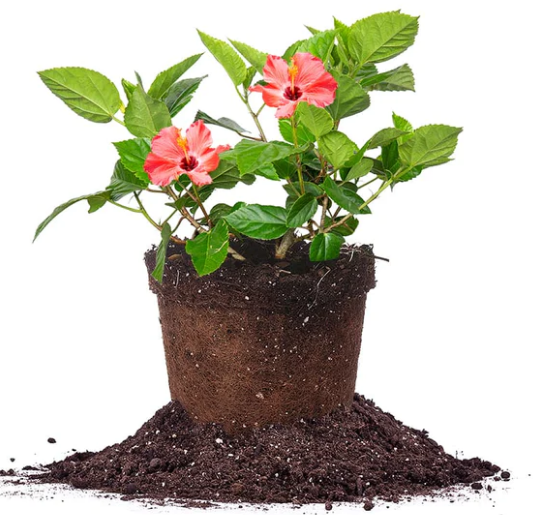
If you’d rather not have the potted hibiscus hanging around the house all winter, alternative locations include a shed or garage. Remember their need for warmth and light, however when overwintering hibiscus.
If there is no window in the spot you have chosen, you’ll need those lights I mentioned earlier (we love these, from Urban Leaf). You might also want to seriously consider a heat source. Even a string of incandescent holiday lights will provide warmth for the hibiscus.
Aim for a room temperature of 60 to 65 degrees Fahrenheit. Yes, with rapidly rising energy costs, I understand that might not be practical.
“The idea is to find the highest temperature you can afford to maintain, then set the thermostat to that temperature,” say the experts at Hidden Valley Hibiscus.
“Even 35°F (2°C) will help the hibiscus a great deal compared to allowing the temperature to fall below freezing,” they conclude.
Prepare the tropical hibiscus to move back outdoors in spring
Prune the tropical hibiscus before March. The plant blooms on new wood so this will give it time to grow what it needs before being taken outdoors again.
If you’ve ever hardened off seedlings or new plants from the nursery, you’ll be familiar with the following routine.
Wait until the temperature outdoors is in the mid-to-upper 50 degree Fahrenheit range to take the first step in acclimating it to the outdoors once again.
You’ll want to gradually expose it to outdoor conditions over the next one to two weeks. The more gradual the process, the better for the hibiscus.
Start with about one hour of direct sun on the first day, then move the plant to an area of the garden that gets dappled or light shade. Gradually increase the amount of direct sun the plant gets until it is receiving 6 to 8 hours.
You can then skip moving it into the shade and leave it in its spring/summer location.
Remember to keep the soil slightly moist during the acclimation period but don’t fertilize it until you’re finished with the process. We recommend a 3:1:2 ratio fertilizer (3-1-2, 9-3-6, 12-4-8, 24-8-16)

Overwintering hibiscus plants in the ground
Hopefully, you considered your winter climate before you put shovel to earth to plant your tropical hibiscus. They just don’t tolerate the cold. At all.
The folks at Hidden Valley Hibiscus say that “… if your area has a history of having fewer than ten nights per year that fall into the high 20’s (-2°C to -1°C) or above and no nights colder than that, you have the possibility of protecting your hibiscus outdoors.”
First, consider the hibiscus’ roots. Protect them with an extra-thick layer of mulch. Then, when the weather people say it’s going to get super cold, water the plant the day before the cold snap.
Yes, it sounds counterintuitive, but wet soil conducts heat faster and better than dry soil. Read more about the science behind this statement at Kansas State University’s website.
After mulching the soil heavily, drape incandescent holiday lights around the hibiscus.
Finally, pound four stakes into the soil, spaced equally around the plant. Over the stakes, drape frost cloth. Ensure that the cloth reaches the soil. Add rocks to the part of the cloth on the soil, to keep the air from getting under it and to hold it in place if the winds kick up.
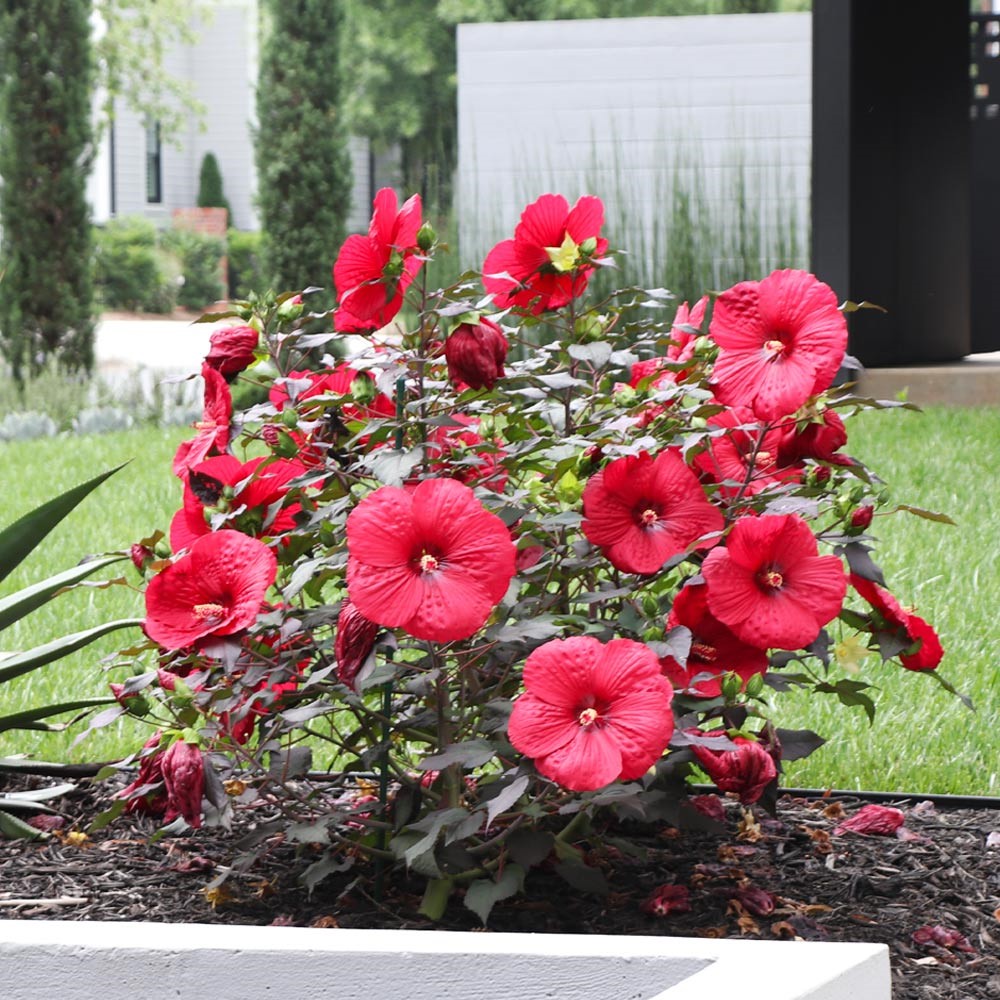
Hardy hibiscus winter care
How cold is too cold for hardy hibiscus? Verrrrry cold. Some university experts claim that the plant tolerates temperatures to -20 degrees Fahrenheit. Others peg the hardy hibiscus’ hardiness to “Zone 5 and above.”
This isn’t to say it’ll be happy and blooming in winter. It will most likely die back to the soil, but it will be back and bloom again in spring or summer (some are very late coming out of dormancy).
The best thing you can do to ensure a successful spring/summer season is to cut the hardy hibiscus back in fall. There’s no need to cut it to the soil, but prune the height a few inches.
Then, apply a thick layer of organic mulch around the root zone to insulate the soil. Just as you would do with an in-ground tropical hibiscus, water the soil 24 hours before a deep freeze.
This one is an easy grower and doesn’t take much to make it bloom like crazy in spring and summer and survive in the winter. Plus, it’s “Non-Toxic to Dogs, Non-Toxic to Cats, Non-Toxic to Horses,” according to the ASPCA.

